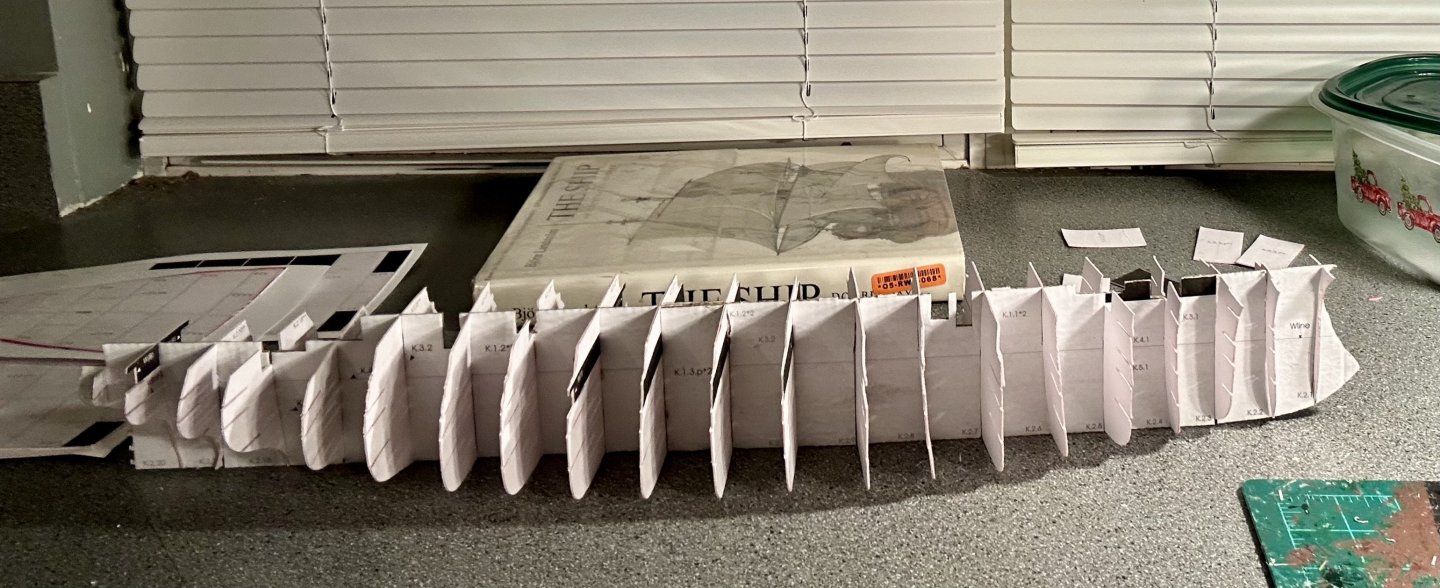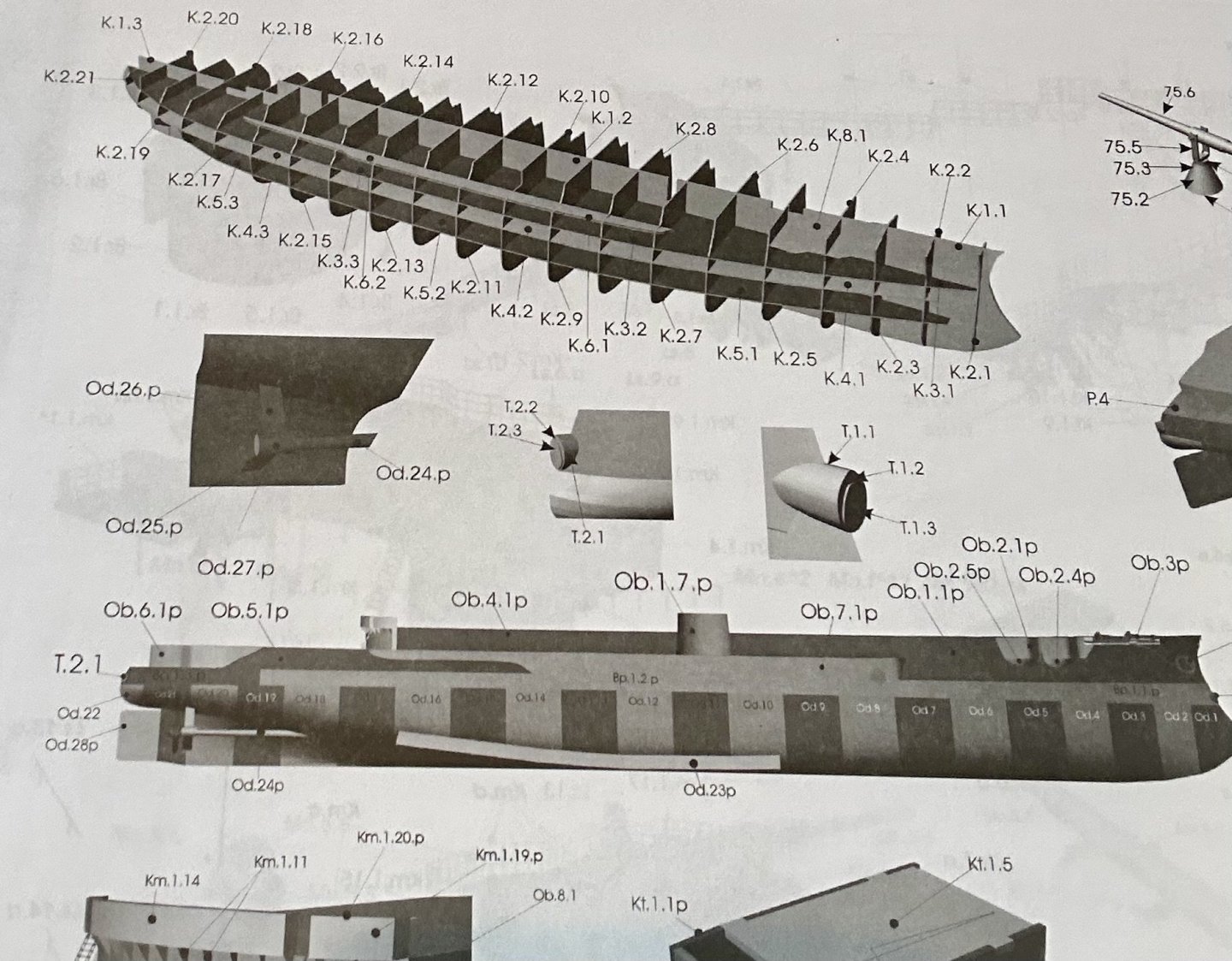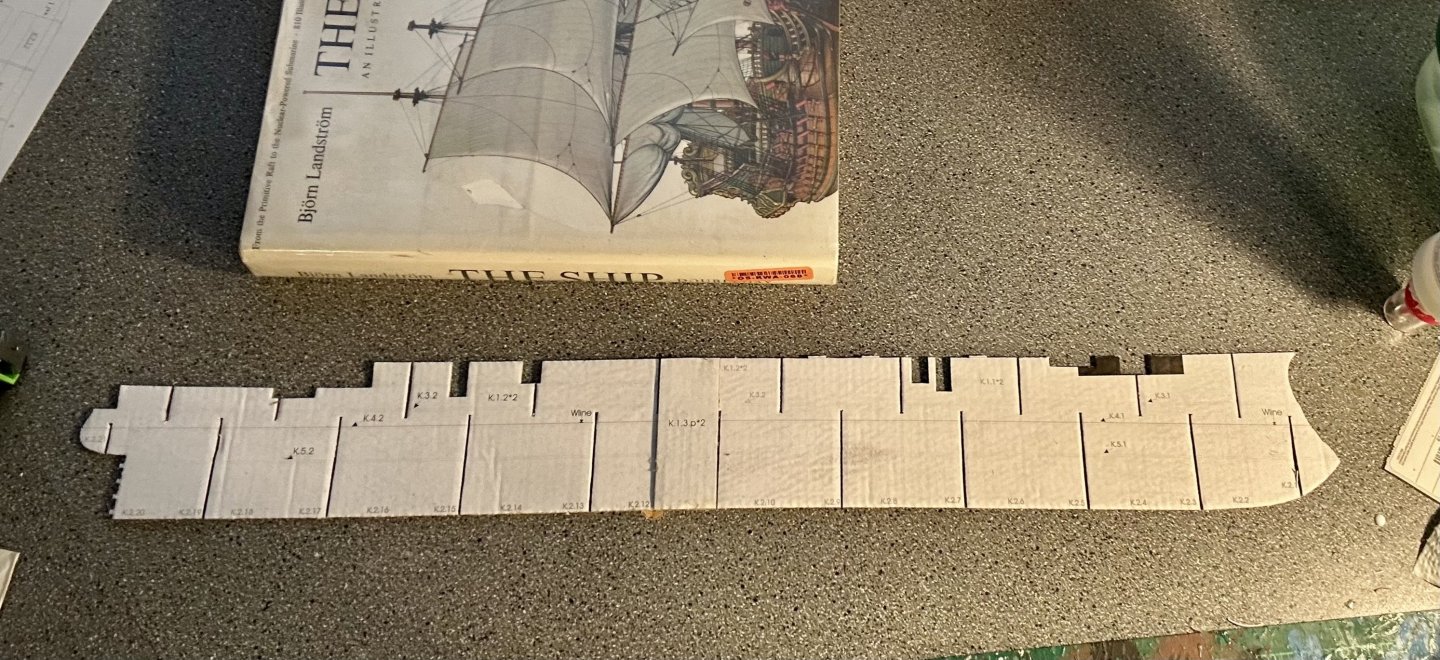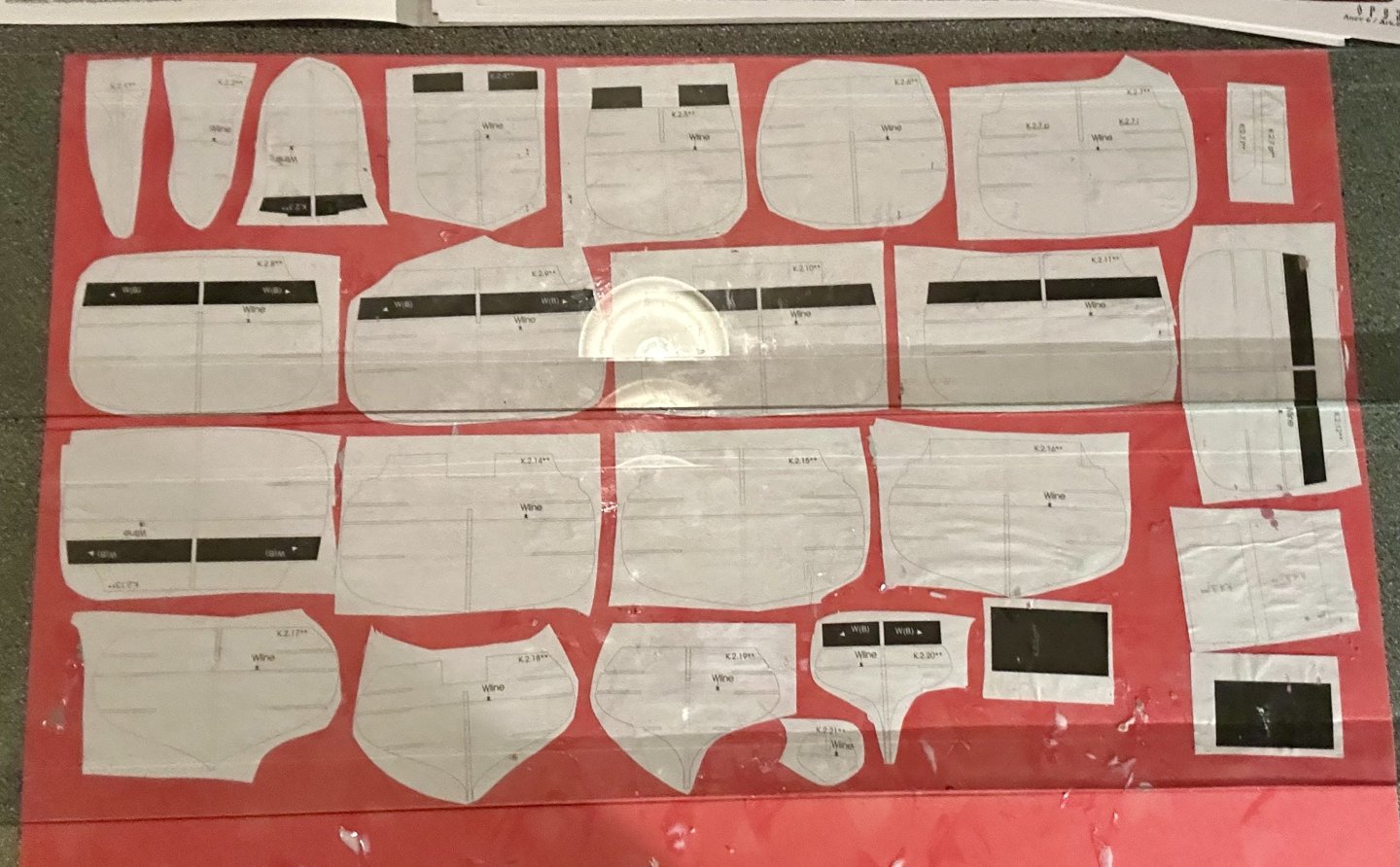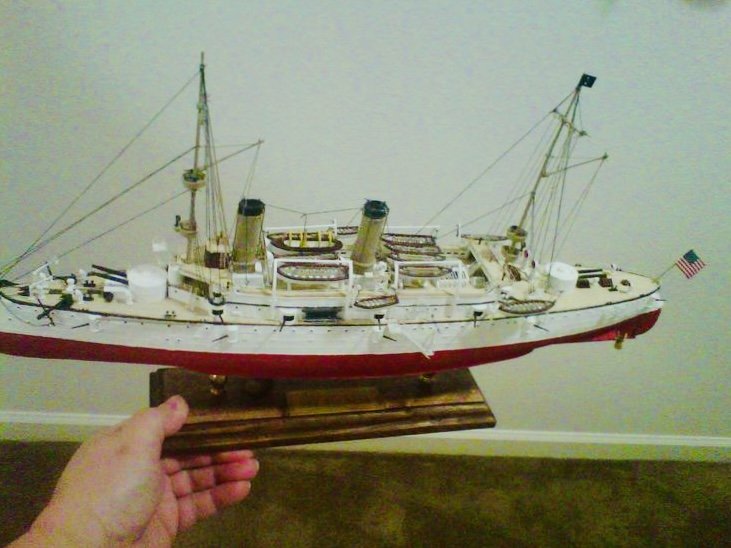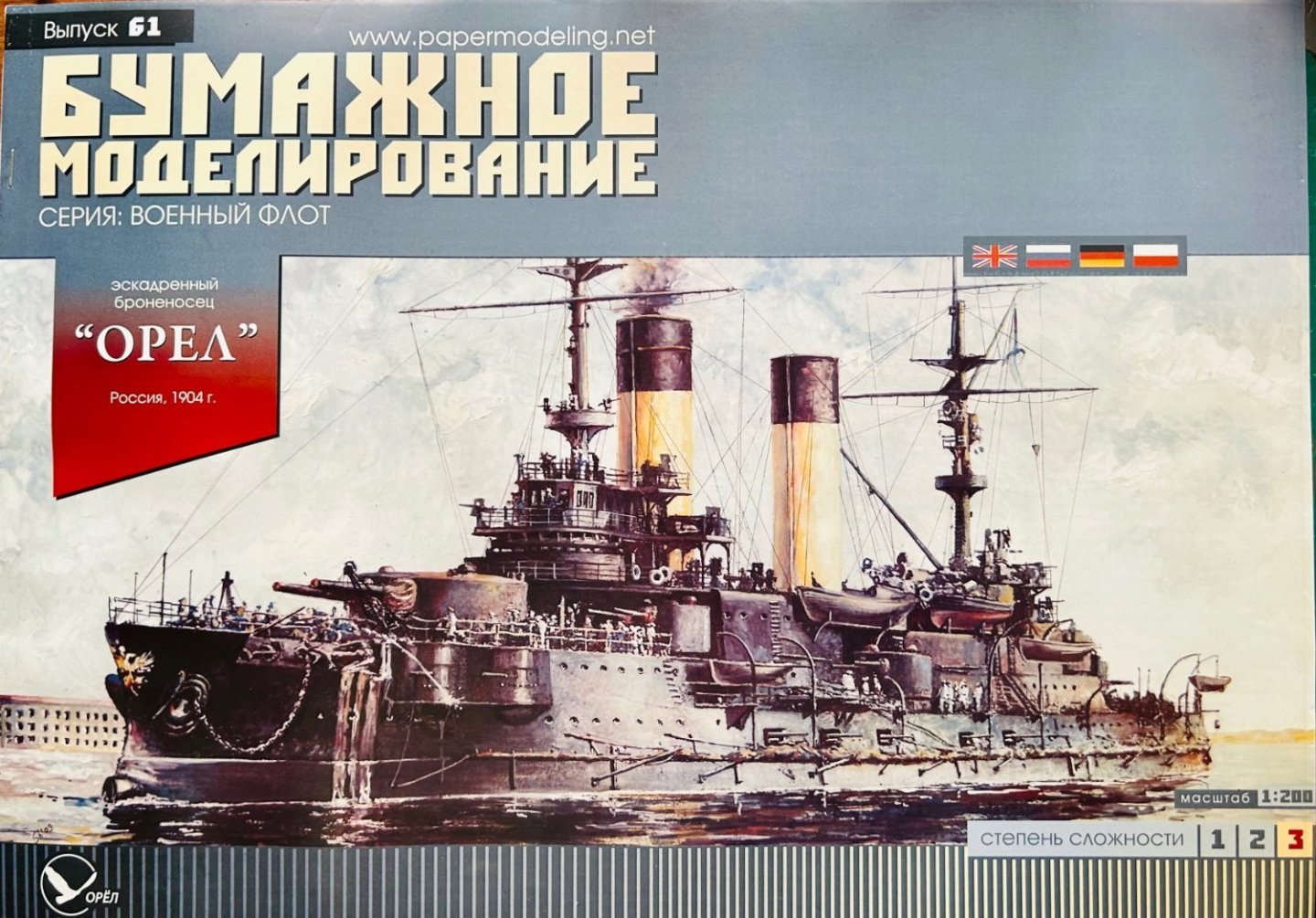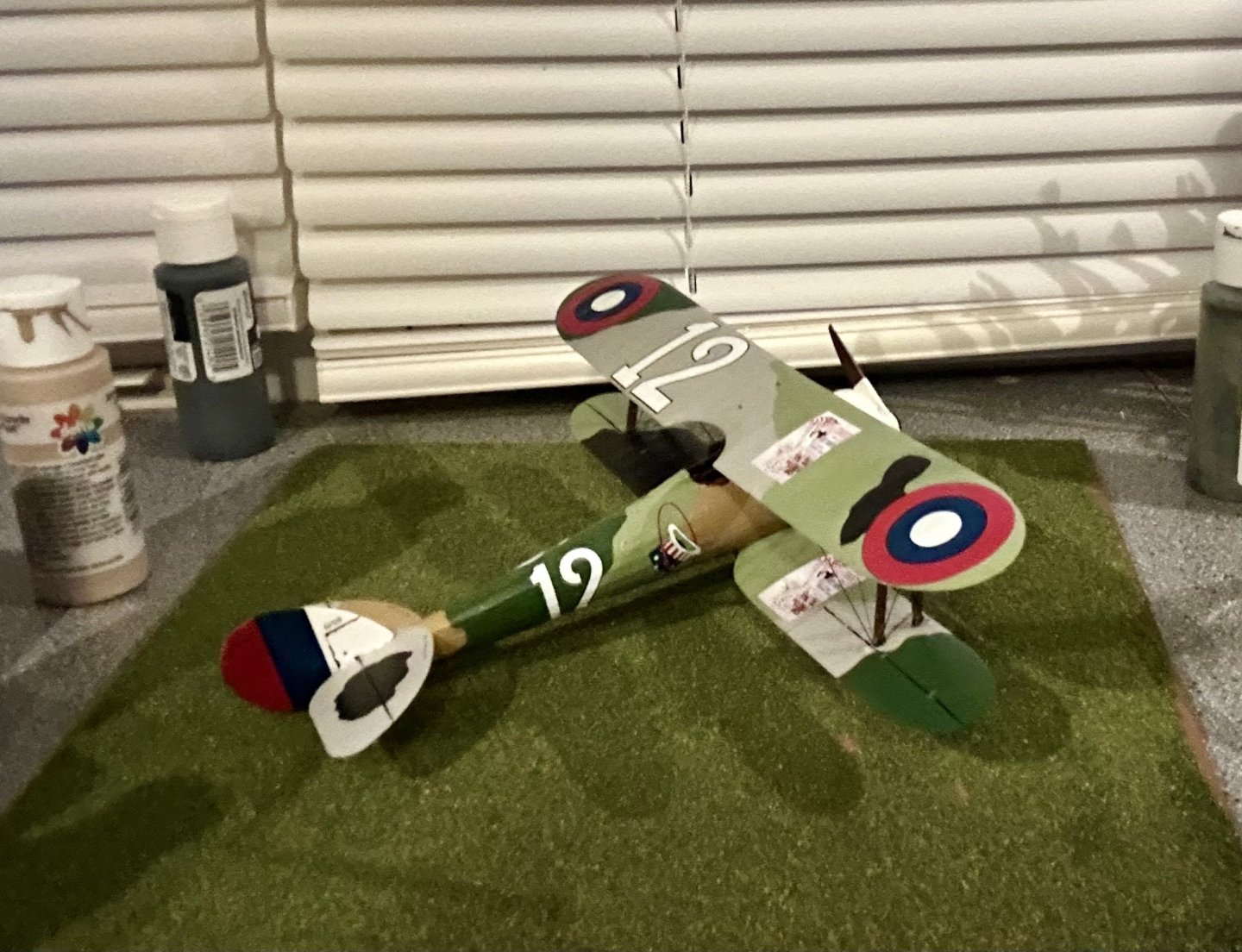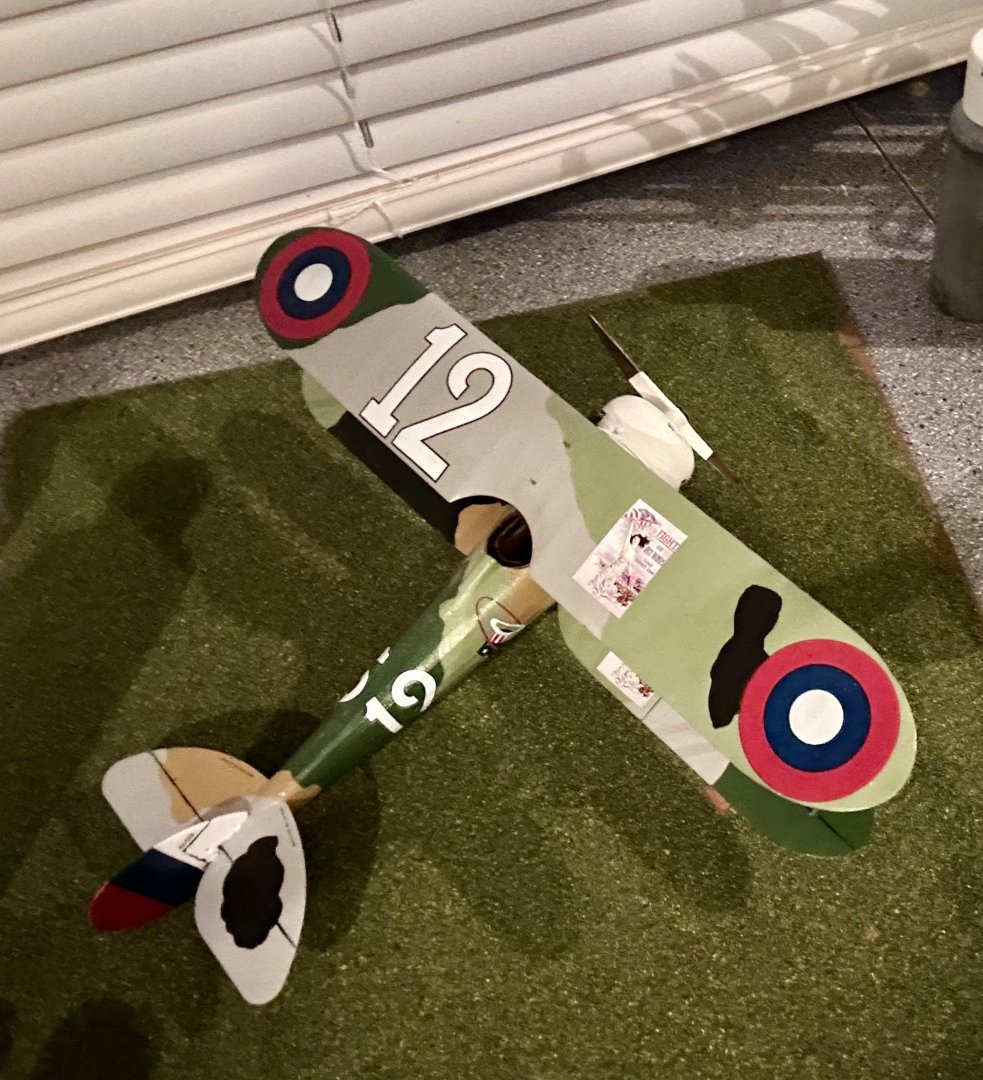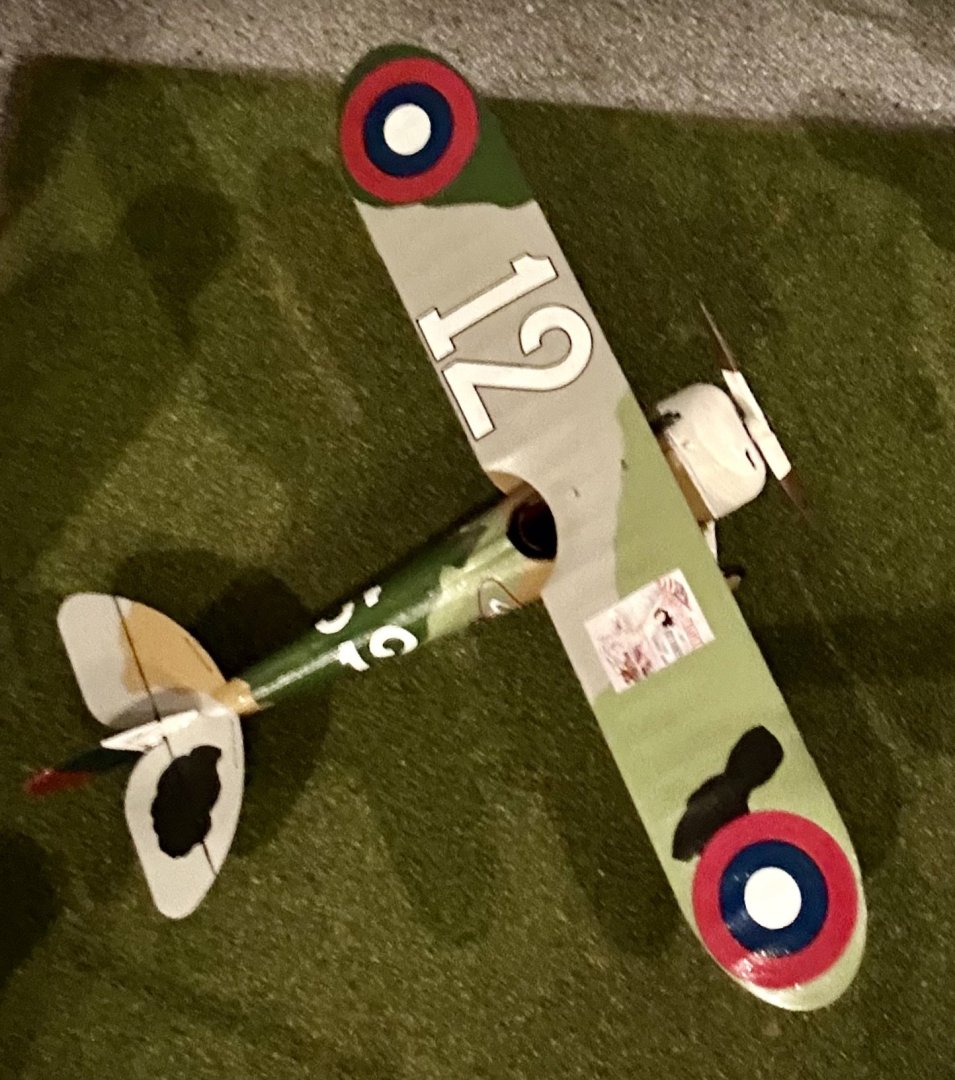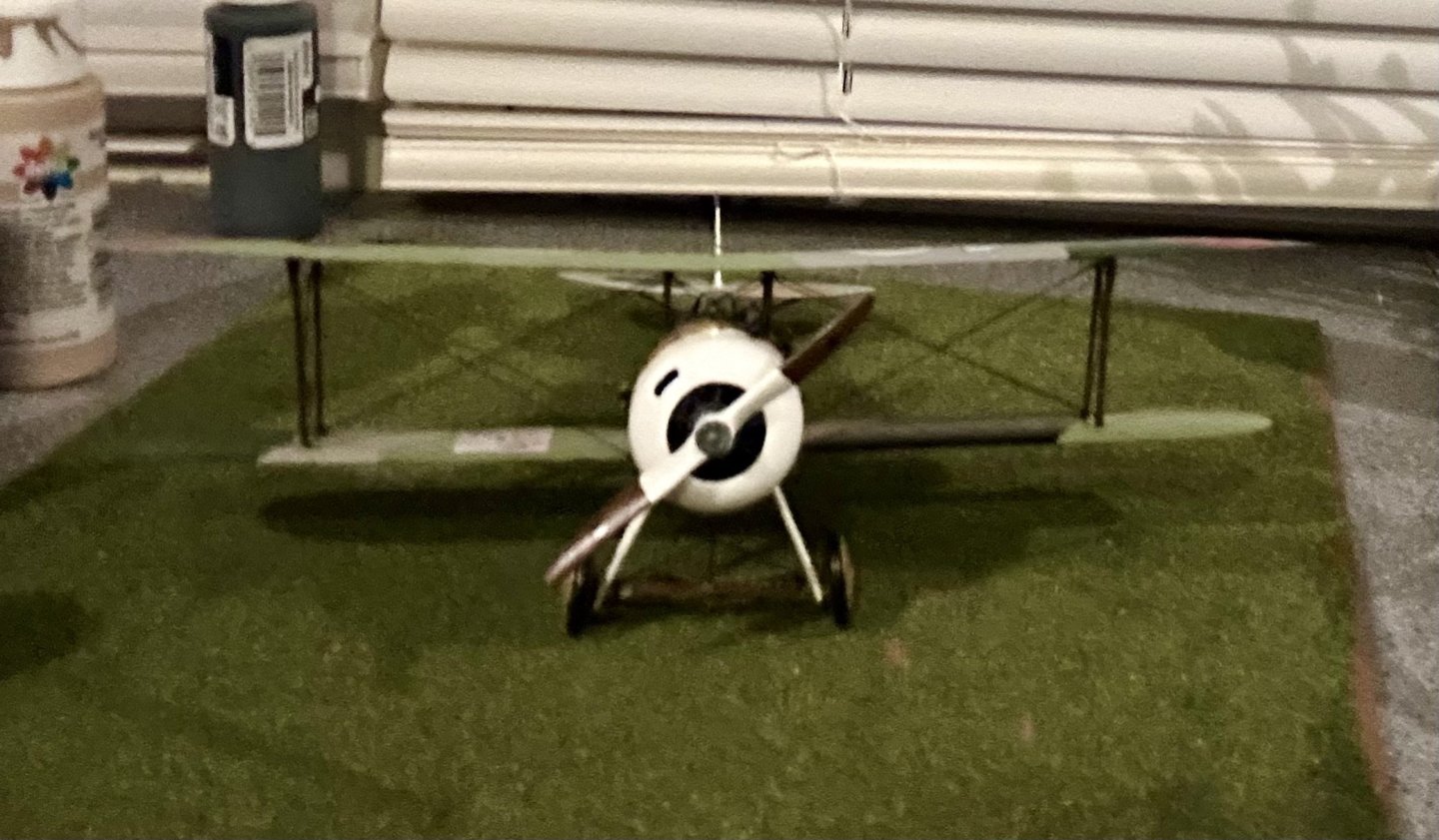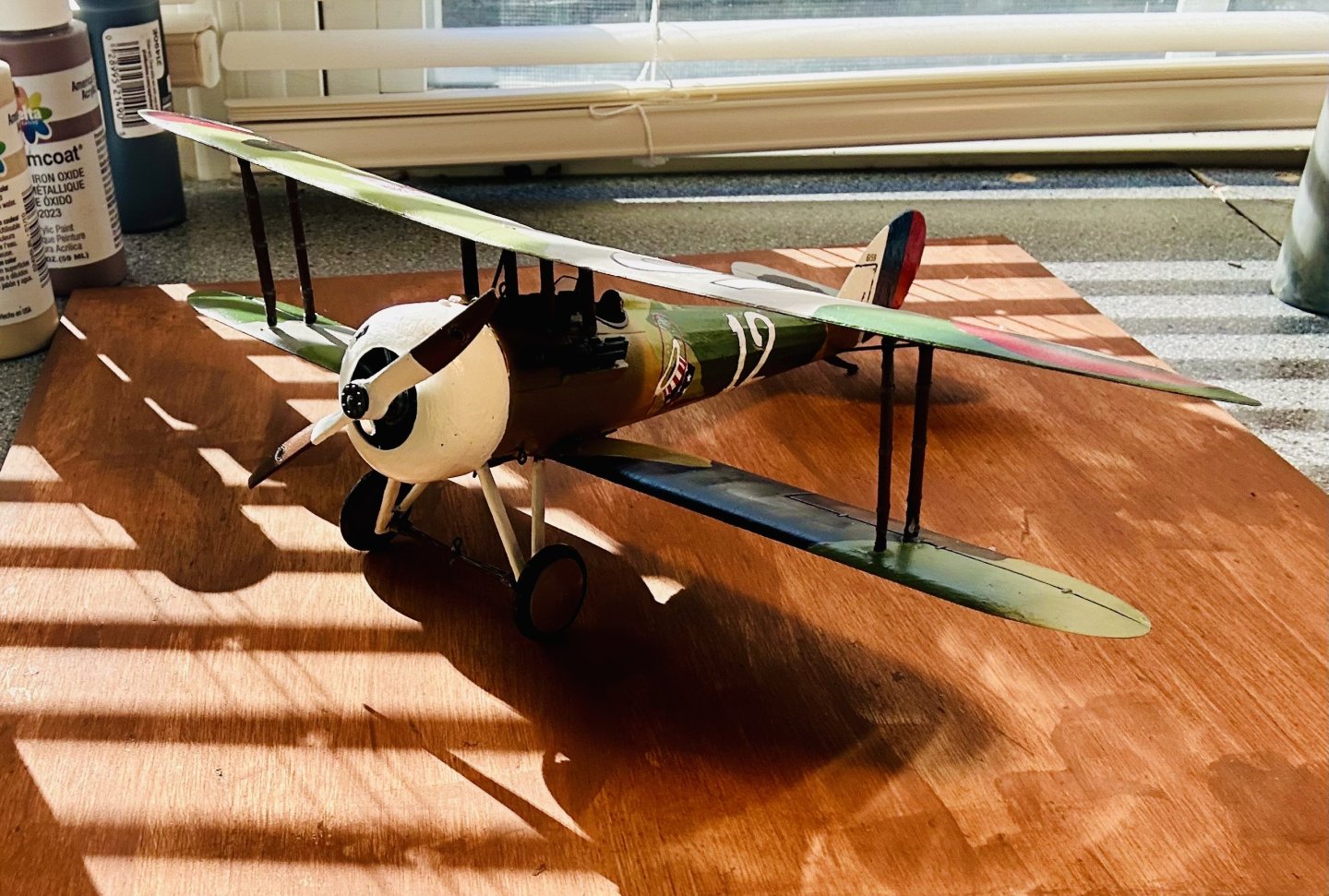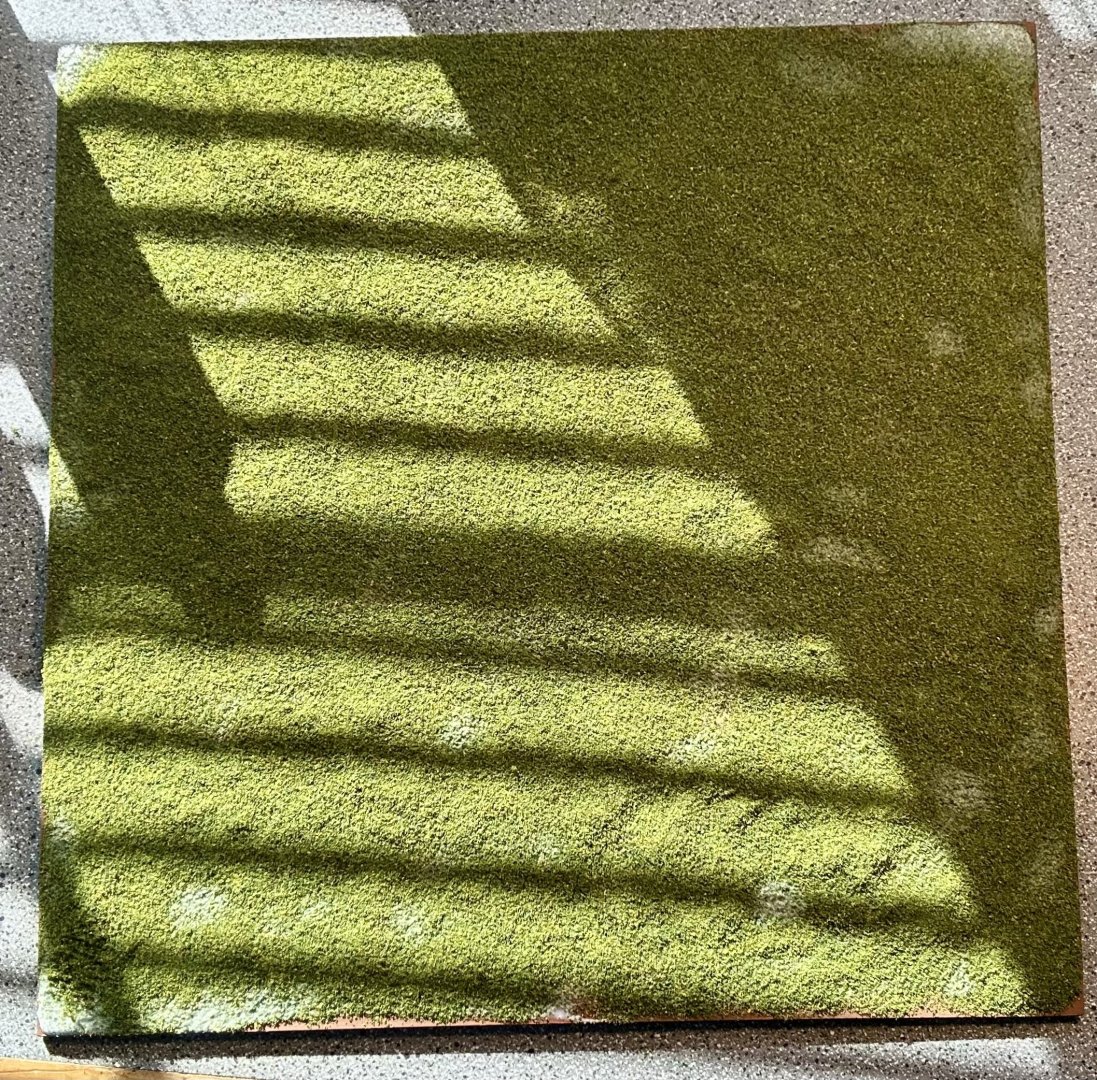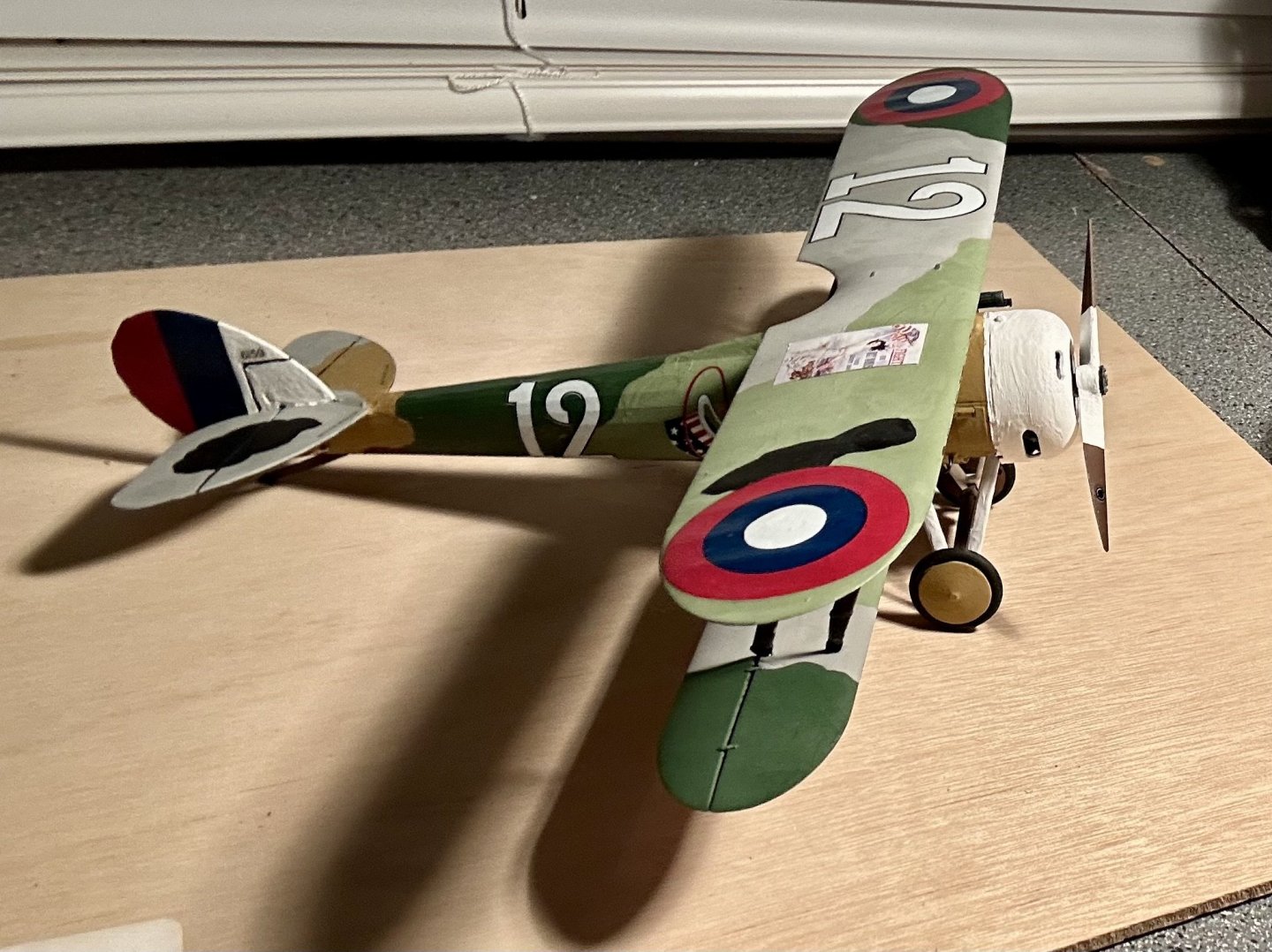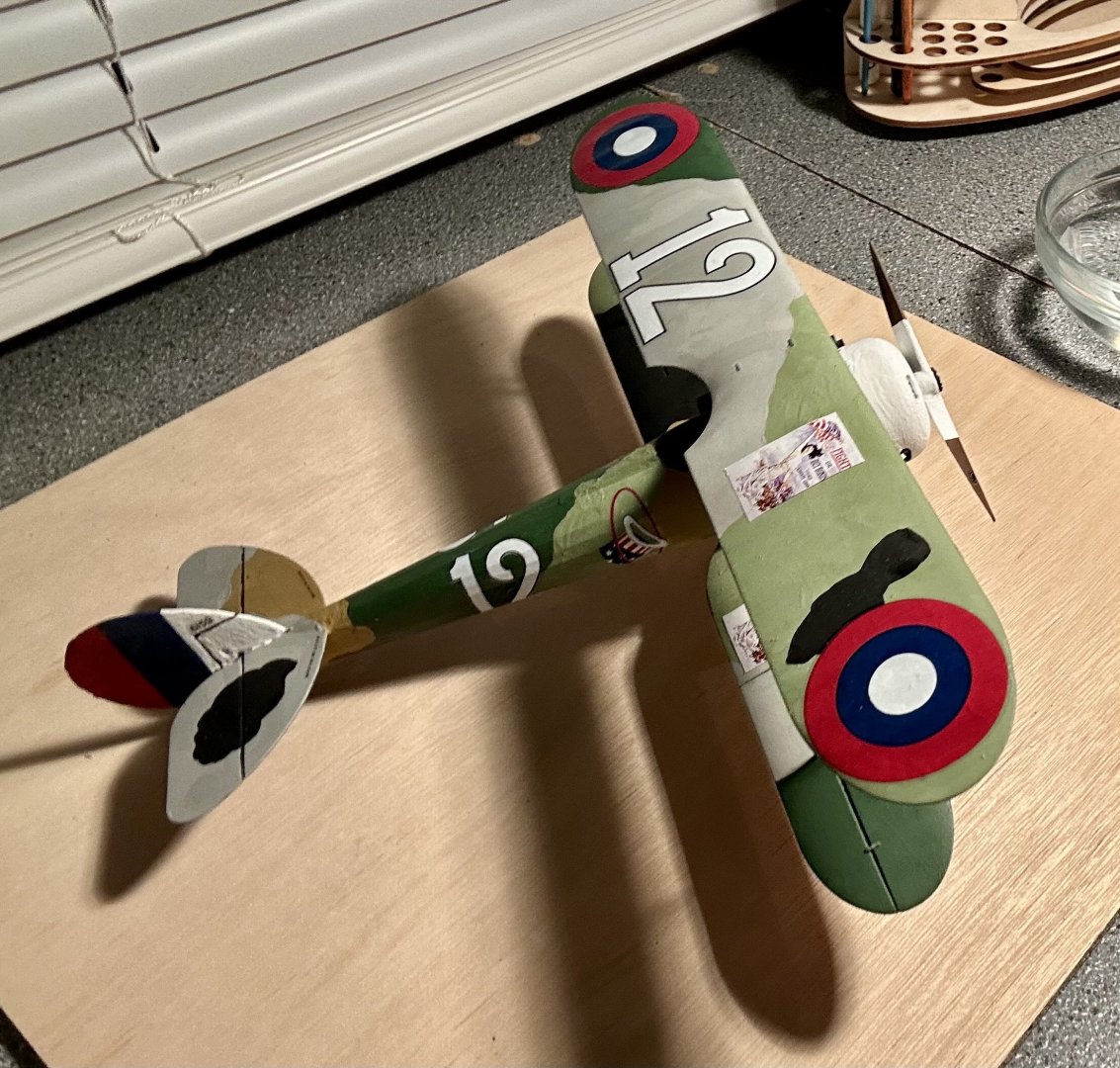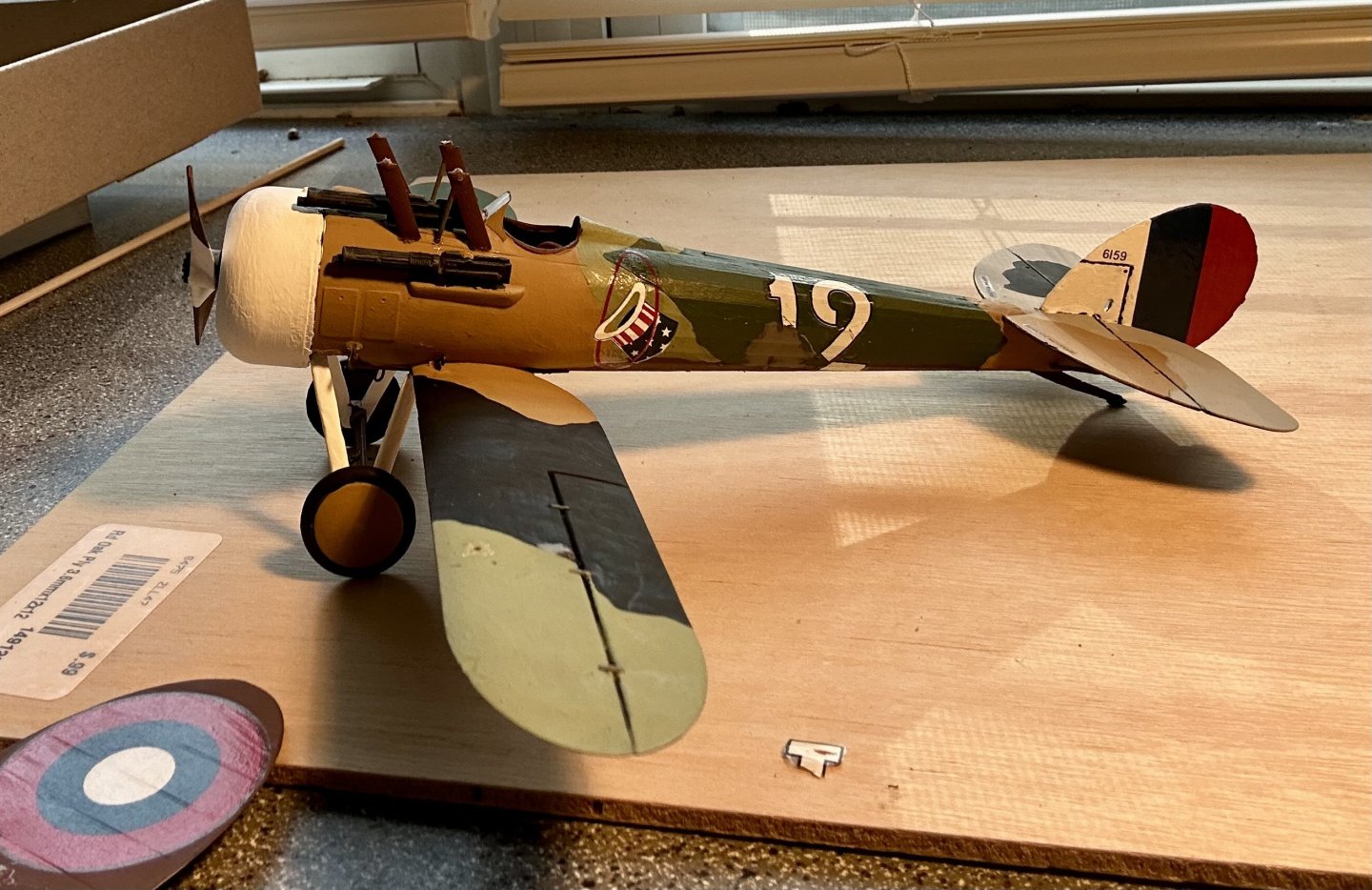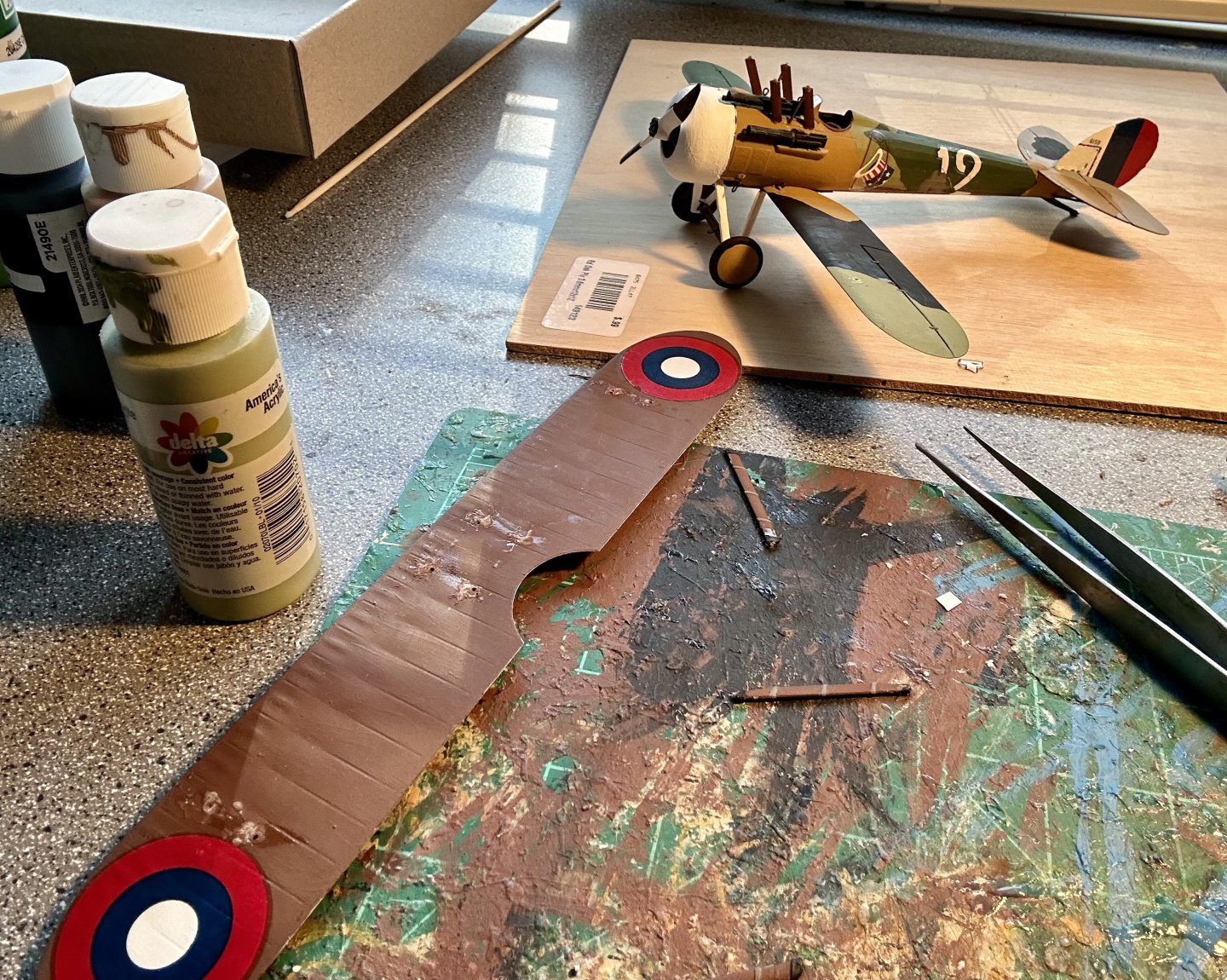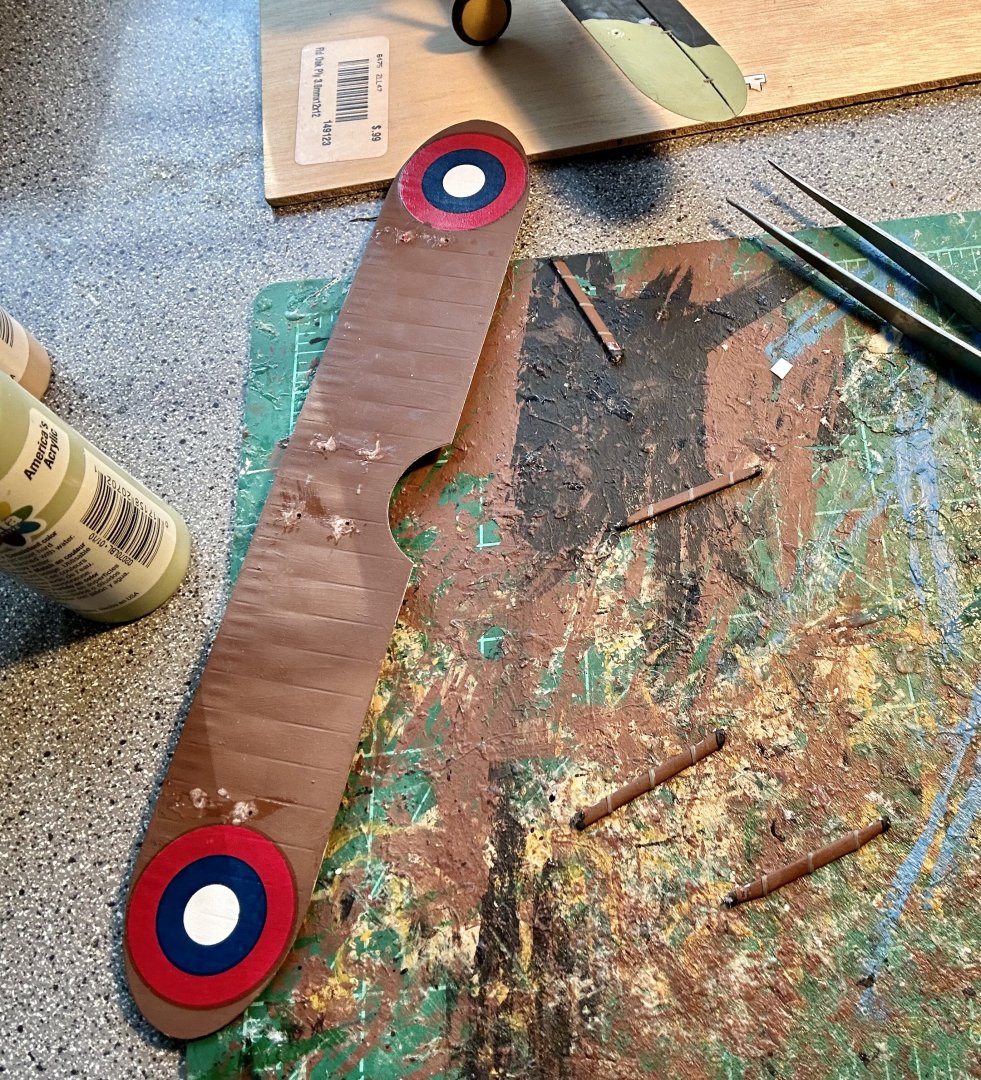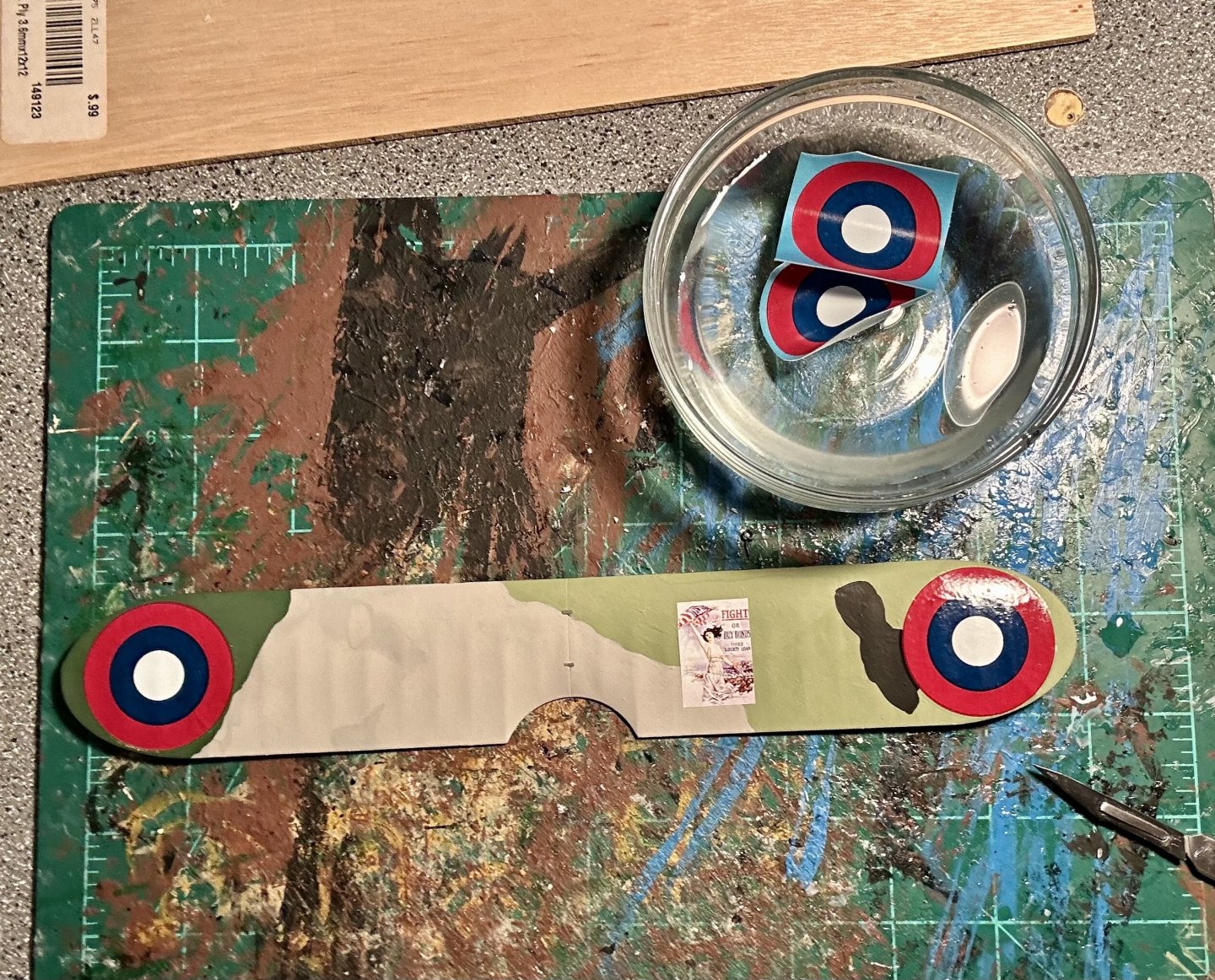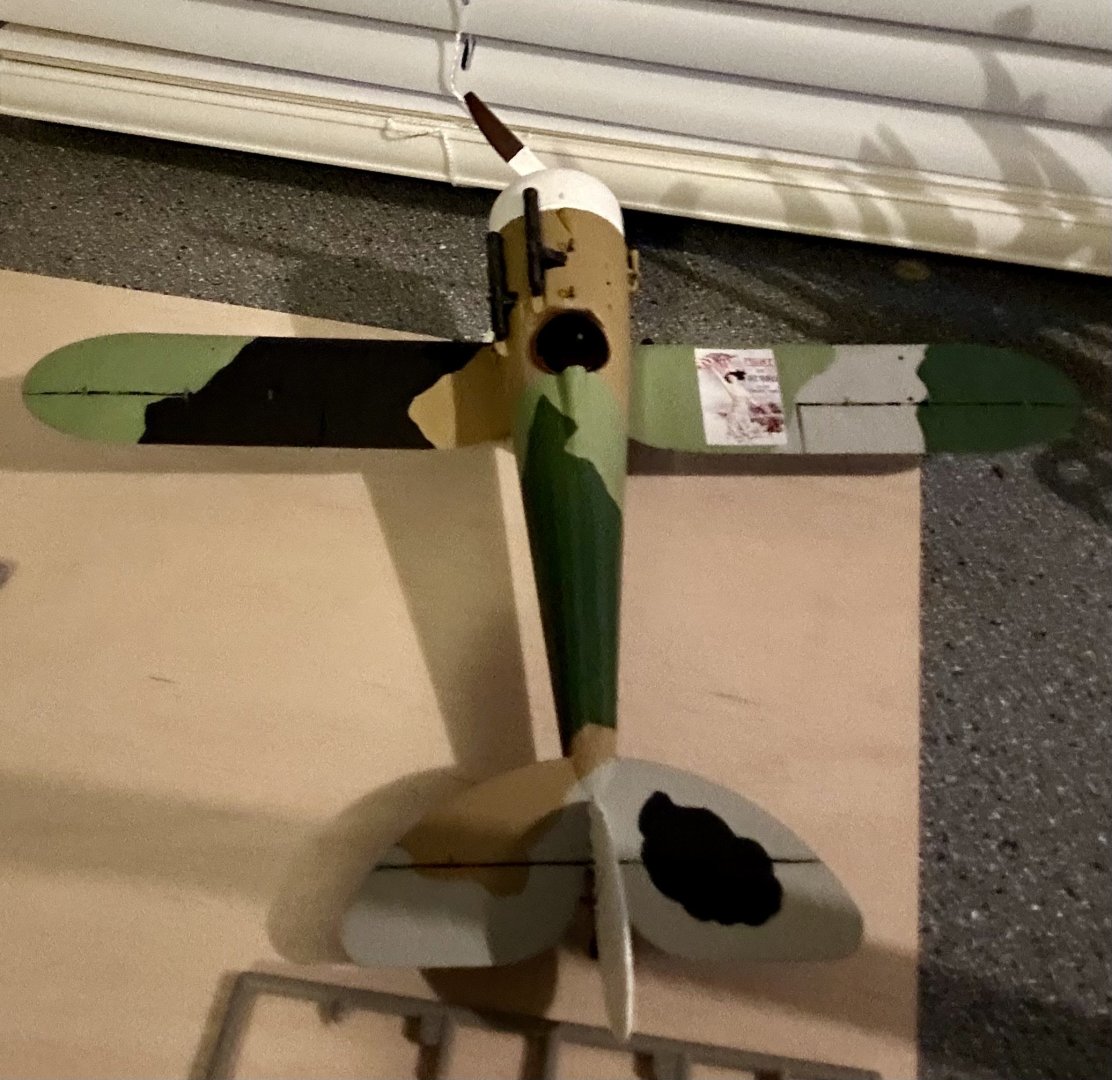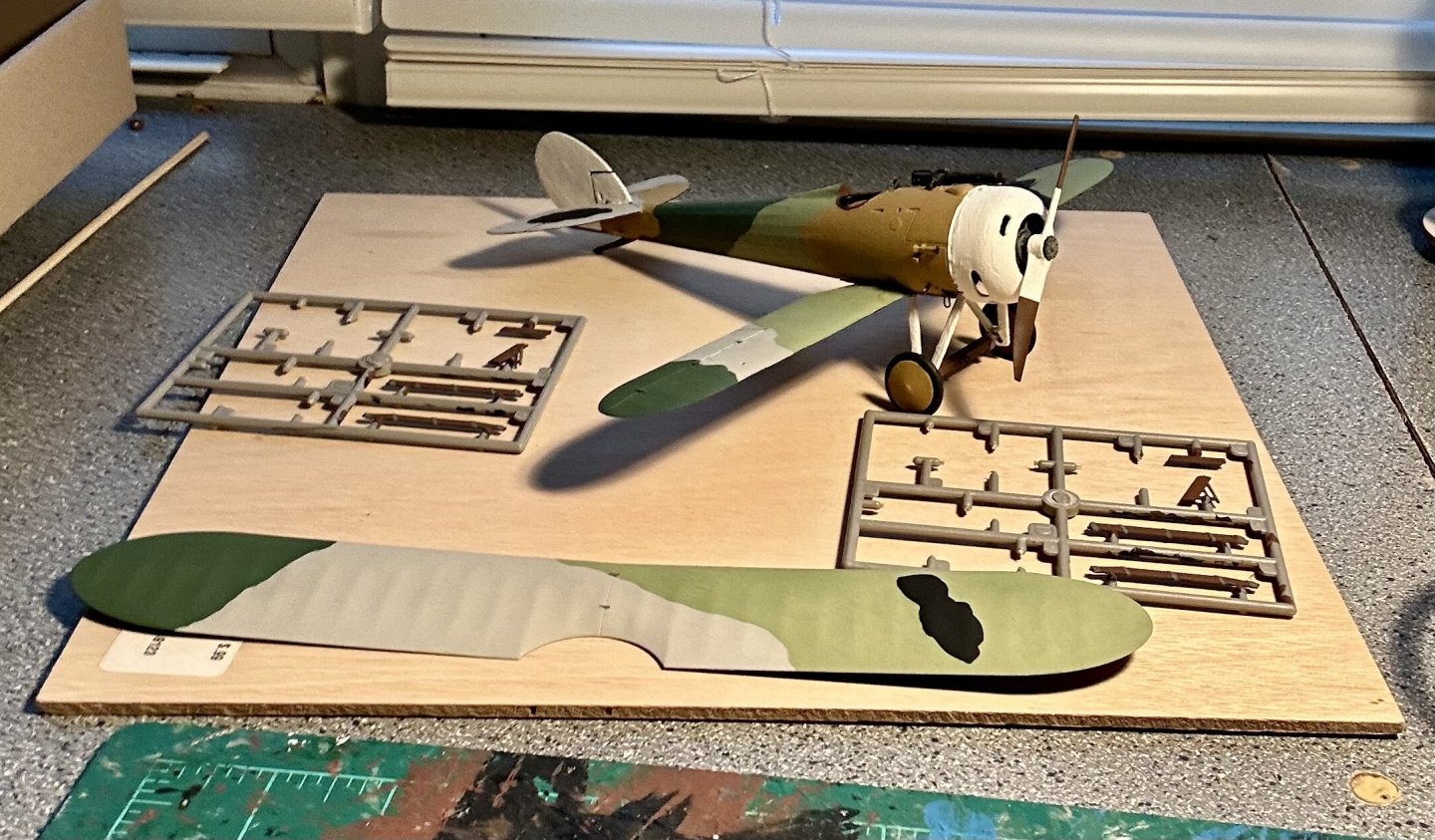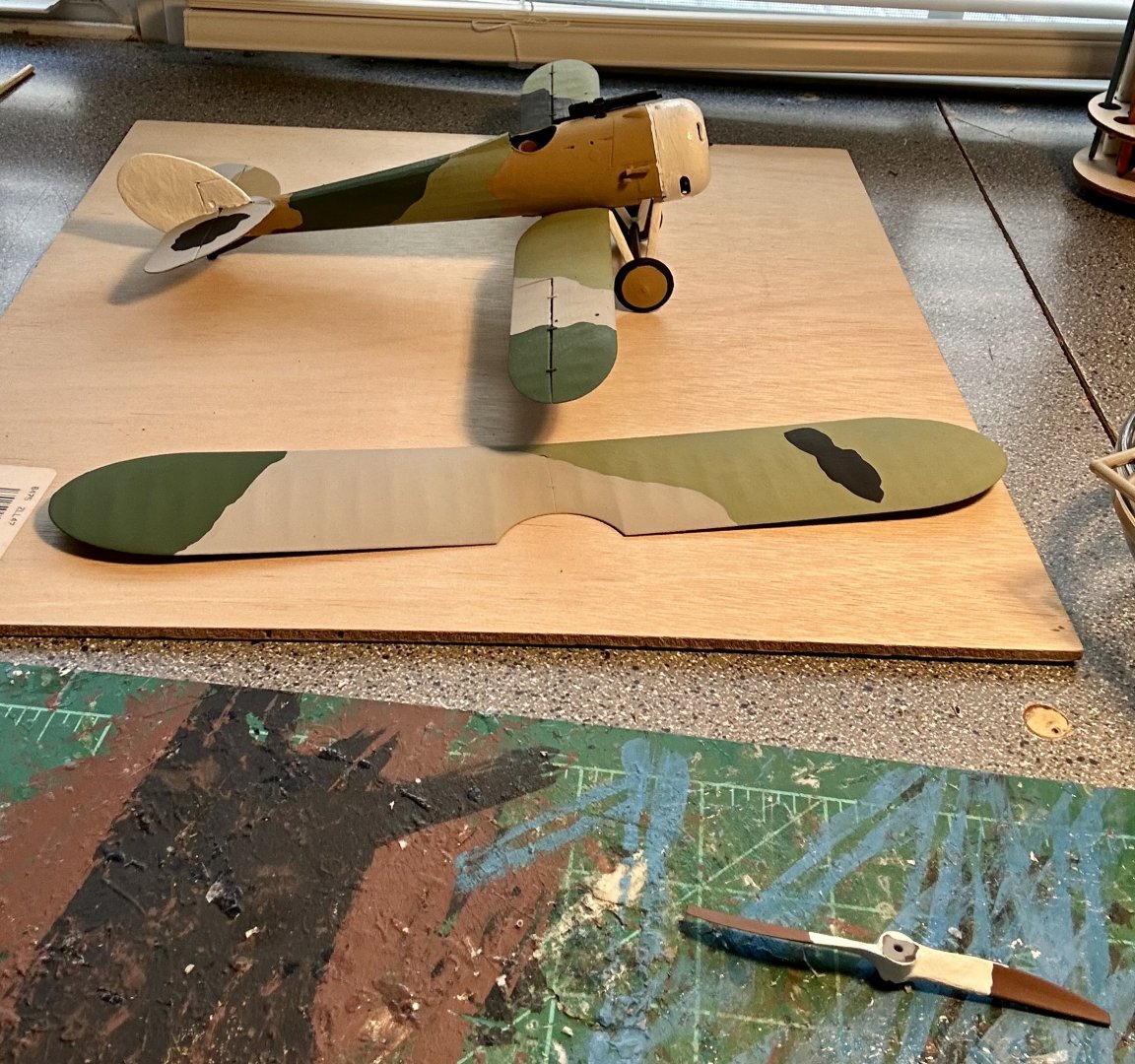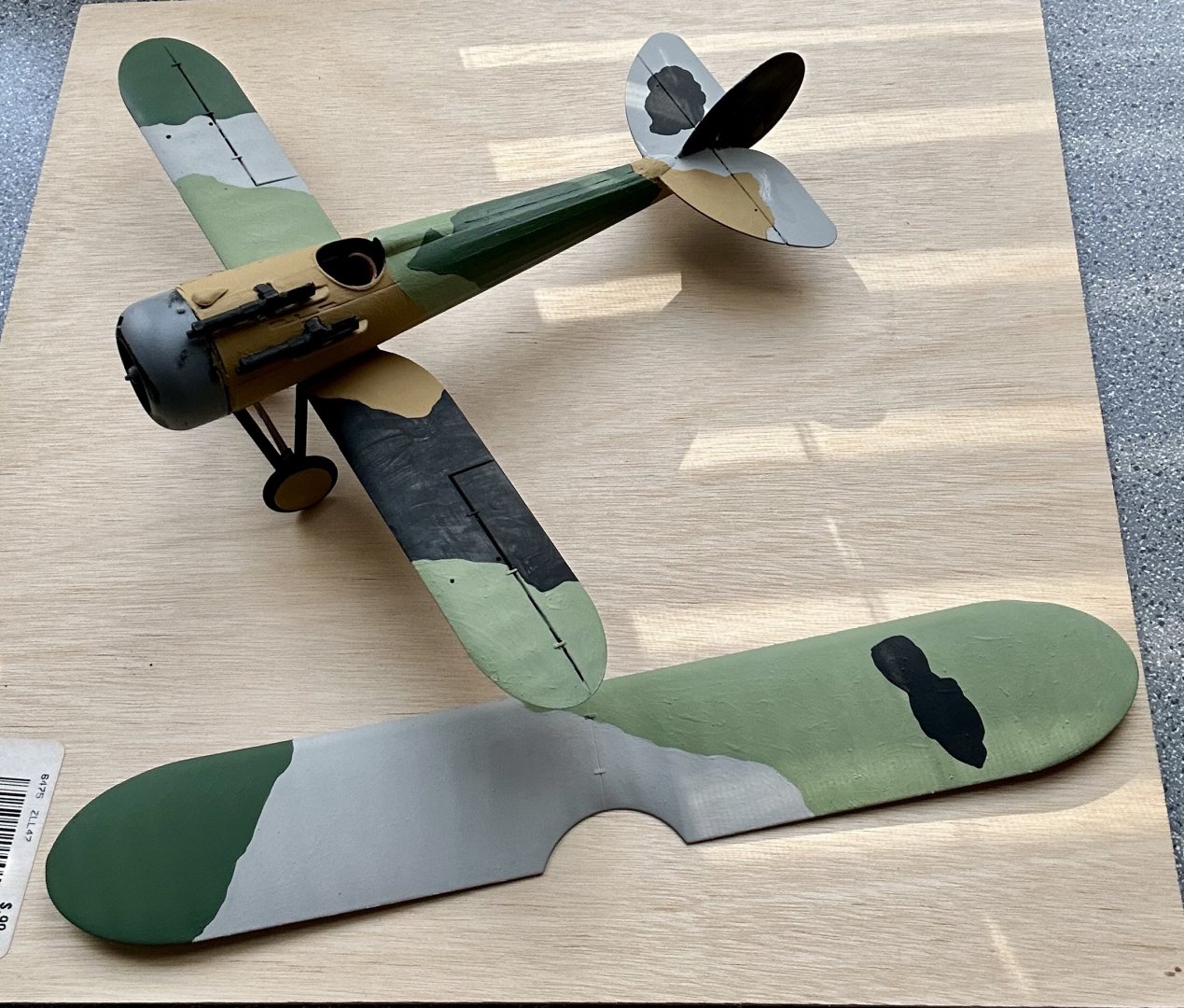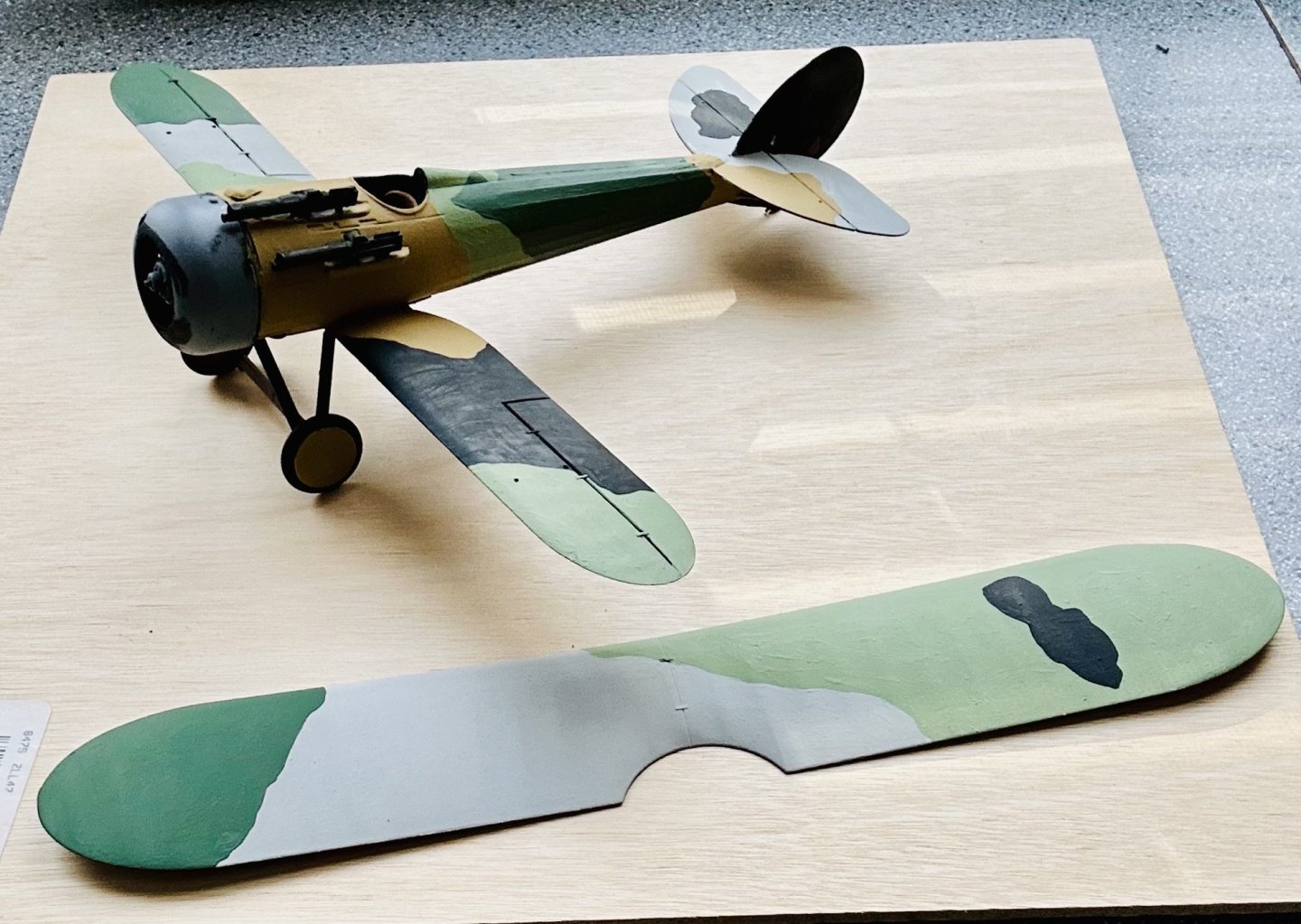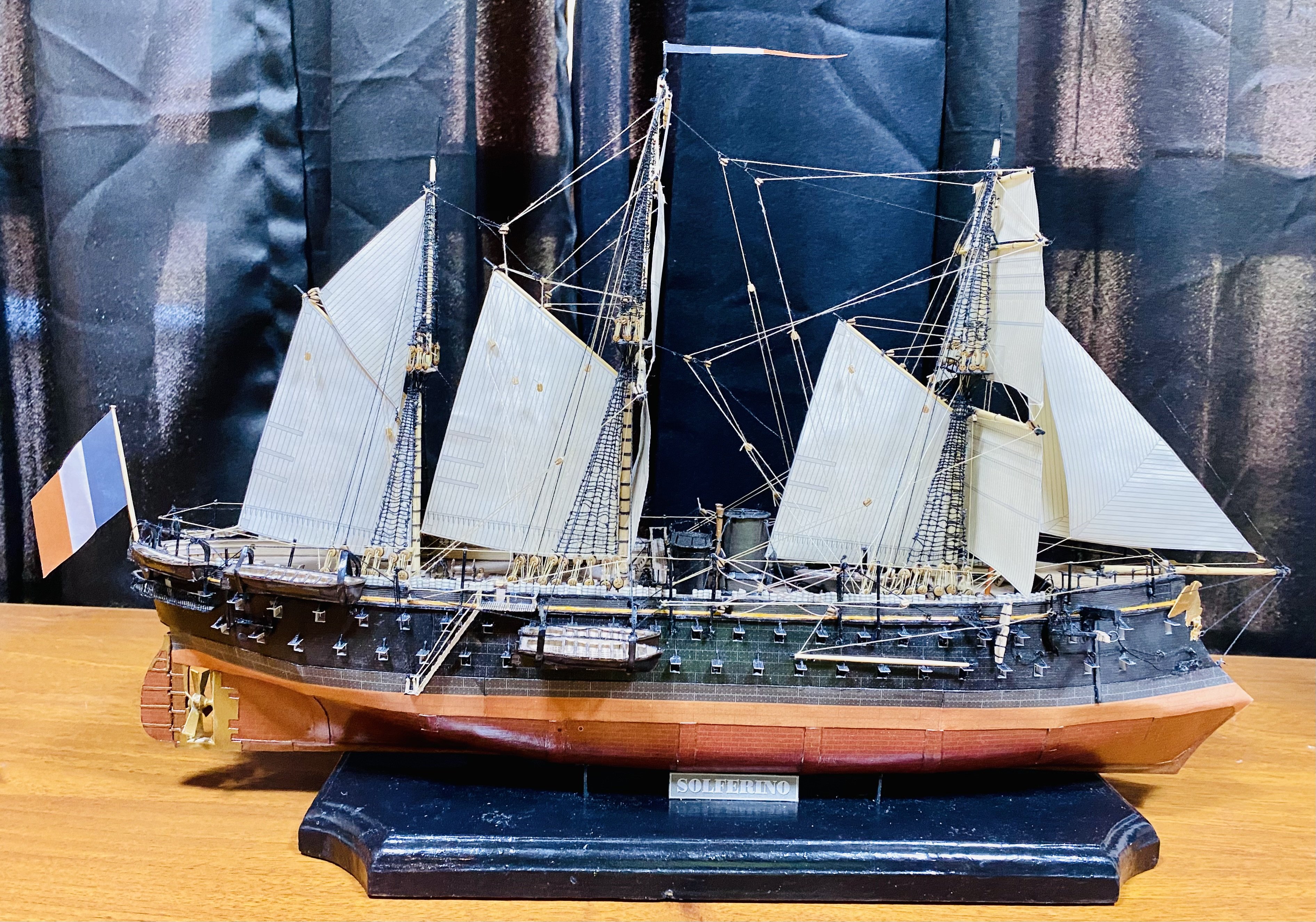
GrandpaPhil
NRG Member-
Posts
6,051 -
Joined
-
Last visited
Content Type
Profiles
Forums
Gallery
Events
Everything posted by GrandpaPhil
-
All bulkheads are laminated up, cut out and test fitted: Next up: the faux decks, which are now laminated up, need cut out and test fitted!
- 288 replies
-
- Card
- Pre-Dreadnought
-
(and 3 more)
Tagged with:
-
Mike, The Admiral decorates with them, for which I am extremely grateful. She doesn’t often request something specific, but when she does, I get to building quickly. Jeff, I went on a buying spree of predreadnought and ironclad card kits and plans after building the ironclad Solferino, also by Orel. I discovered a whole era of Naval history that I didn’t know even existed. I had seen the predreadnoughts by Deans Marine and that kit of the Olympia that I built, but I knew next to nothing about Naval history from the European side for most of the 19th century and into the early twentieth century. I found these kits because @ccoyle kindly sent me an Amazon link for HMV’s kits and Orel’s predreadnought kits showed up under suggestions of things I might like. I have bought five of them now. Inspired by those, I bought two more sets of plans from AAMM of a late 19th century battleship and a steam powered three decker. I have learned so much about model ship building, and the possibilities out there, including that card models are a viable and legitimate form of ship modeling, from this forum. I strongly recommend @Ab Hoving’s card modeling from scratch tutorial on this forum. It got me started on card ships. I have completed four card ships now and I hope that I am just getting started.
- 288 replies
-
- Card
- Pre-Dreadnought
-
(and 3 more)
Tagged with:
-
Ken, This is my fourth build using corrugated cardboard for structural members. Once the frame is glued it is quite rigid and structurally sound. Once the hull covering is on and dried, the hull is as solid as a wood model. Only the center keel is corrugated on this one. It was supposed to be 2mm thick. The others are supposed to be 1mm thick. I only damaged the center plate because I tried to manhandle it to make something fit, so it was my own fault. This model has 3-4 layers of longitudinal shaping pieces too. The hull will be quite structurally sound. OC, I appreciate the sentiment. The fiddly part is all the detail parts, then, if this is anything like my last predreadnought, I’ll have to careful to only handle the model by its base.
- 288 replies
-
- Card
- Pre-Dreadnought
-
(and 3 more)
Tagged with:
-
Working on cutting out and fitting bulkheads and structural members. It’s slow going, but that is to be expected. And I accidentally ripped the center plate in three pieces, so it’s drying now, after being repaired. All of the remaining hull structural pieces are laminated and drying now.
- 288 replies
-
- Card
- Pre-Dreadnought
-
(and 3 more)
Tagged with:
-
Thank you very much! And so begins construction: The centerplate is corrugated cardboard and is glued together! Working on laminating all the remaining hull structural pieces together and getting them cut out for test fitting.
- 288 replies
-
- Card
- Pre-Dreadnought
-
(and 3 more)
Tagged with:
-
Congratulations! Nicely done!
- 89 replies
-
- bluejacket shipcrafters
- revenue cutter
-
(and 1 more)
Tagged with:
-
Thank you all! The beginning of all POB card ships: This one has a lot of bulkheads which is a really good thing. That will help structural integrity and prevent hull twist.
- 288 replies
-
- Card
- Pre-Dreadnought
-
(and 3 more)
Tagged with:
-
This is an old picture taken back when I had recently built Olympia (back in 2012): I’ll get a picture of the curio cabinet later on.
- 288 replies
-
- Card
- Pre-Dreadnought
-
(and 3 more)
Tagged with:
-
The Admiral and I have a curio cabinet that we display my smaller ships in. The Admiral asked me to build something that complements my Encore USS Olympia which sits by itself on the second shelf. That means another pre-dreadnought, of which I have several sitting in my stash. The Oryol will fit quite nicely on that shelf with the Olympia, even with a stand, and complement the Olympia perfectly. The Oryol was a Borodino-Class Imperial Russian first-rate battleship launched in 1902. She stood 397 feet long and is of French design. The Japanese captured the Oryol in 1905. This will be a neat build.
- 288 replies
-
- Card
- Pre-Dreadnought
-
(and 3 more)
Tagged with:
-
The plane itself and the base are done: I treated the rigging exactly like stays on a warship. I used cotton thread treated with beeswax. I might get EZ line later on to try out, especially with the number of early 20th century warships that I have sitting in my stash. Now, to wait on my Eddie Rickenbacker figure to finish the diorama.
-
Model Shipways USF Essex Plans - $5.99?
GrandpaPhil replied to Wawona59's topic in Wood ship model kits
I bought them too. I think the bulkhead tracings as drawn on the plans are suspect, so I would cross check them with the line drawings before trying to use them. Conversely, the plans have the original line plans in scale, so it may be worthwhile to design your own bulkheads. -
The upper wing is on and the base is made! Now, I need to do a final round of touch ups, sealing and then apply a highlight coat before gluing the model down once the base dries! Also, I now need an Eddie Rickenbacker. Captain Rickenbacker stood 6’ 2” tall. Allowing 2” for his hat and the soles of his shoes, that makes for a total height of 76”. At 1/32 scale that is 2.375” or 2 3/8” and approximately 3/8” thick by 3/4” wide, assuming normal proportions. Allowing for the leg crossed over, we’ll start with 1/2” thick. The arm will be carved separately.
-
Thank you all very much for the moral support! It is always disheartening when that happens, but it is an opportunity to improve at the same time. I fixed my paintwork yesterday: The Admiral found a couple spots that need touched up, so I am going to fix those, let the model dry for a bit and then seal it. In the meantime, I’ve been working on a papercraft 1/467 USS Sulaco, from the Aliens movies, that I found over on the Paper Modelers forum. I started it right after finishing the Solferino, about 22 months ago, prior to starting the Revenge. I found it while rearranging the house and decided to clear one of my started projects off my slate. I may make a build log for it at a later date depending on how it turns out. I have been working on it for a month or two now.
-
I had the model about 90% complete: And then I had a disaster. I noticed the port side aircraft number (within the squadron, not the tail number) was wrinkled and my attempt to repair it nearly destroyed the model. Root cause analysis: I have not built a plastic model in a long time and forgot the nature of water transfer decals. I should have let the model dry overnight prior to sealing and then tried to install the upper wing. I plowed ahead. Bad decision! My efforts to straighten out the decal resulted in the stripping of the paint from the area and destruction of about 1/3 of the decal. I also busted the upper wing loose. Fortunately, all is not lost! This is salvageable. Believe me when I say that I have worked with far worse (my Solferino was a near total loss a few times, among other models), and made models that I have been, or would be, willing to display publicly. Time to repair all paintwork/markings and then let it sit overnight before I seal the model. I will then attempt to use the original wing struts one more time and then replace them with wood utilizing steel pins as guide pins.
-
How will laser cutters compliment our hobby tomorrow?
GrandpaPhil replied to EspenT's topic in 3D-Printing and Laser-Cutting.
A lasercutter to me is essentially a fancy scroll saw for wood work. I personally enjoy cutting everything out by hand but that may change in the future if I get tired of my coping and fret saws. So, I see a lasercutter as an additional CNC machine tool to save time with, if one is so inclined. -
The initial base coating is done: It had a 5-color camouflage scheme which I duplicated to the best of my abilities. I don’t have an airbrush, so everything was freehand brush painted. I will finish touch ups and minor details, and paint the engine cowling, the struts, part of the propeller, and the vertical stabilizer, white the next time I work on the model. Then it’ll be time to add some eyebolts and decals, attach the upper wing and on to rigging! Then it’ll be carving time!
-
Absolute beginner here - new to ship modeling
GrandpaPhil replied to AlanR's topic in New member Introductions
Welcome!
About us
Modelshipworld - Advancing Ship Modeling through Research
SSL Secured
Your security is important for us so this Website is SSL-Secured
NRG Mailing Address
Nautical Research Guild
237 South Lincoln Street
Westmont IL, 60559-1917
Model Ship World ® and the MSW logo are Registered Trademarks, and belong to the Nautical Research Guild (United States Patent and Trademark Office: No. 6,929,264 & No. 6,929,274, registered Dec. 20, 2022)
Helpful Links
About the NRG
If you enjoy building ship models that are historically accurate as well as beautiful, then The Nautical Research Guild (NRG) is just right for you.
The Guild is a non-profit educational organization whose mission is to “Advance Ship Modeling Through Research”. We provide support to our members in their efforts to raise the quality of their model ships.
The Nautical Research Guild has published our world-renowned quarterly magazine, The Nautical Research Journal, since 1955. The pages of the Journal are full of articles by accomplished ship modelers who show you how they create those exquisite details on their models, and by maritime historians who show you the correct details to build. The Journal is available in both print and digital editions. Go to the NRG web site (www.thenrg.org) to download a complimentary digital copy of the Journal. The NRG also publishes plan sets, books and compilations of back issues of the Journal and the former Ships in Scale and Model Ship Builder magazines.

